
As temperatures rise this summer, the pool is the perfect place to cool off. Before you dive in, make sure you and your child are prepared. Here are a few tips for parents and tots to navigate the waters from Jamie Cartledge, owner of the just-opened Aqua Tots Surprise.
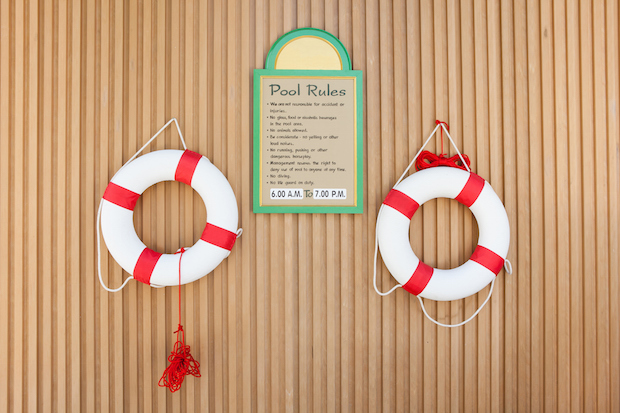
Set Water Rules and Boundaries
Safety first, fun second—setting water rules and boundaries should be the first thing you do with you child before entering the pool. Cartledge suggests imaging the pool is a busy interstate.
“You would not let your child sit on the side of a busy interstate, in the same way we don’t sit on the side of the pool. You would never let your child on or near the highway without being right there, and in the same way, we do not let children play unattended in or around water.”
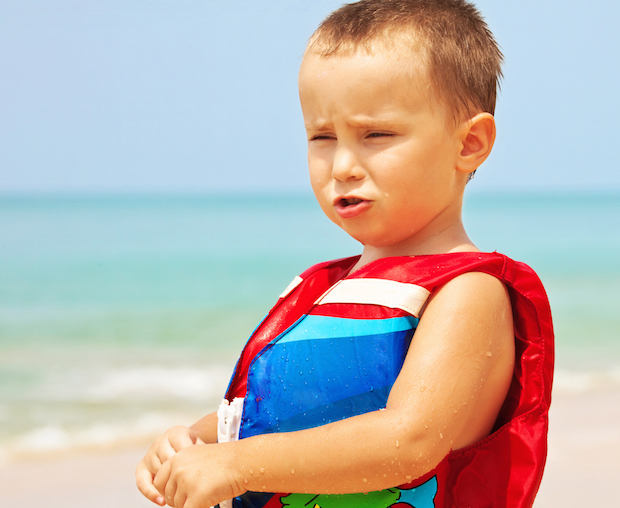
The Perfect Floating Device
When purchasing a floating device for your child make sure it fits properly. Cartledge suggests a few simple rules to keep in mind while shopping:
A Snug Fit.
“Check the weight and chest size on the label and try the life jacket on your child right at the store. Pick up your child by the shoulders of the life jacket and tell them to relax and raise their arms. The child's chin and ears won't slip through a properly fitting jacket. Do not buy a jacket that is too large, hoping the child will grow into it.”
Head Support for Younger Children.
“A well-designed life jacket will support the child's head when the child is in the water. The head support also serves to roll the child face up.”
A Strap Between the Legs for Younger Children.
“This helps prevent the jacket from coming off over the child's head.”
Comfort and Appearance.
“This is especially important for teens, who are less likely to wear a life jacket.”
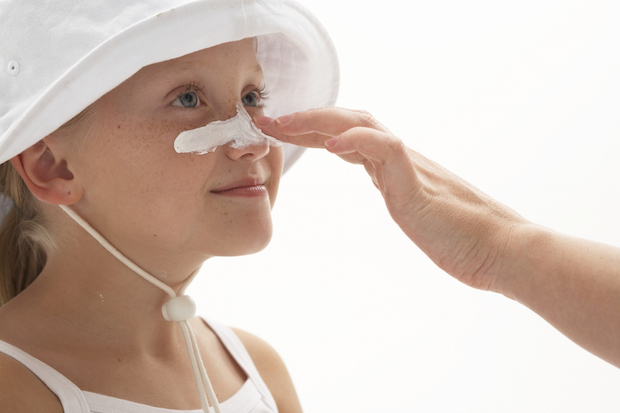
Sun Protection For Tots
When it comes to protecting sensitive skin, more is more. Cartledge stresses the importance of sunprotection for young children. “Long-sleeve, lightweight, fitted rashgaurds are the best form of UV protection. Note, not all rash guards offer UV protection. Make sure you look for fabrics treated with a special UV coating—some offer up to SPF 200-plus protection from the sun’s harmful rays and are tested and approved. When using sunscreen, make sure to apply 30 minutes before going into the pool, allowing time for the sunscreen to soak in and making sure to reply every two hours. On top of that, always wear hats if possible.”
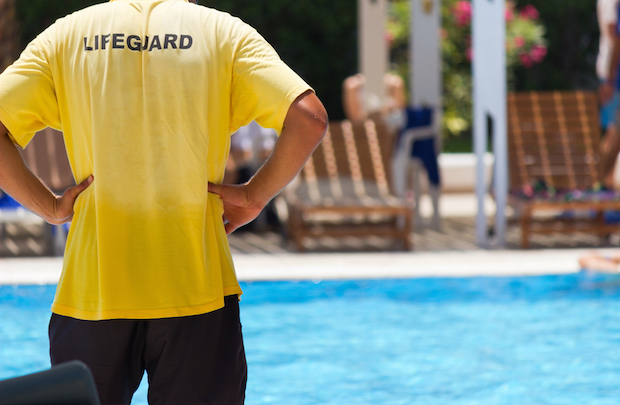
CPR Certification and Water Safety
Keep the pool a safe and fun place this summer. Make sure adults around the pool are either CPR certified or knowledgeable on water safety and always having a designater “water-watcher.”
“Drownings happen most frequently in private settings accompanied by a lot of people, so being CPR certified is recommend and having knowledge on water safety is key. One should always have a designated water-watcher, wearing something to identify their position, such as a yellow hat, a lanyard and whistle, or even a bright colored shirt—something that clearly signifies that they are in charge of the water—this will prevent the ‘I thought you were watching them? No I thought you were!,’” says Cartledge.
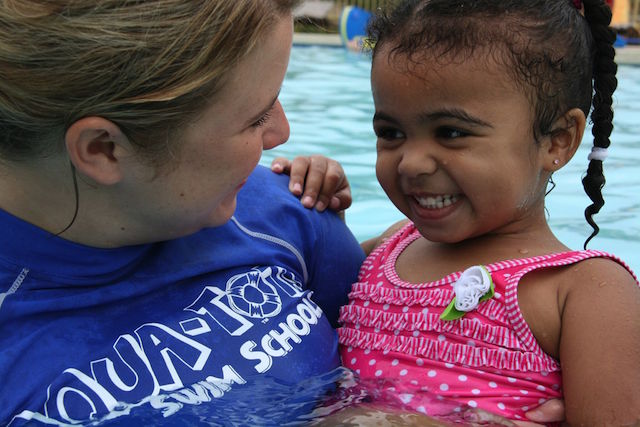
Introducing Water
New parents need not be afraid of having their little ones in the water. Slowly introduce the feeling of being submerged with these tips from Cartledge. “Start introducing your children to water at a young age, during bath or shower time. I like to start by trickling water over their face and work my way up to going underwater, that way by the time I take them into the pool they are find going underwater and have already mastered the reflex of holding their breath.”
If it is the first time you are taking your child into a pool, evalutate how comfortable you feel teaching your child to swim before you get in the water. If you feel comfortable, Cartledge incourages parents to do so, making sure that they are in the water with their child at all times. She also stresses not to put children in floatation devices and let them float around. If parents do not feel comfortable taking their child into the water, think about siging up for a parent and child swim class.
“The challenge many parents have is that they don’t know what to do with their child once they get them in the water. In this case, a parent-and-tot class can be a lot of fun and provide you with the knowledge of what to do with your child in the water.”
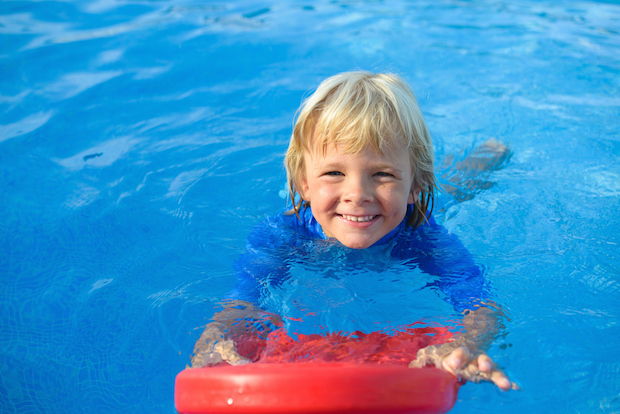
Teaching Tools
Feel confident in your child’s swimming abilities with swim lessons and helpful teaching toys.
“The ultimate teaching tool is an instructor that knows how to handle little ones in the water. Then the introduction of some toys can help a child explore the water. I recommend little toys that float, noodles, rings that don’t float and mats,” says Cartledge.

Check Water Temperatures Before Entering the Pool
Set water temperatures specifically for your childs age and swim experience. Cartledge explains the dangers of water temperatures that are too hot or too cold.
“The temperature of the water depends on the age of the child and the activity they are performing. The best temperature for leisure swimming is in the high 80’s. When children get a bit older and are moving around more, they build up their own heat and the water can be cooler.”